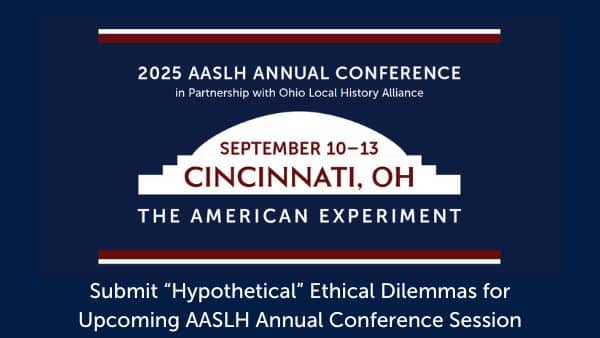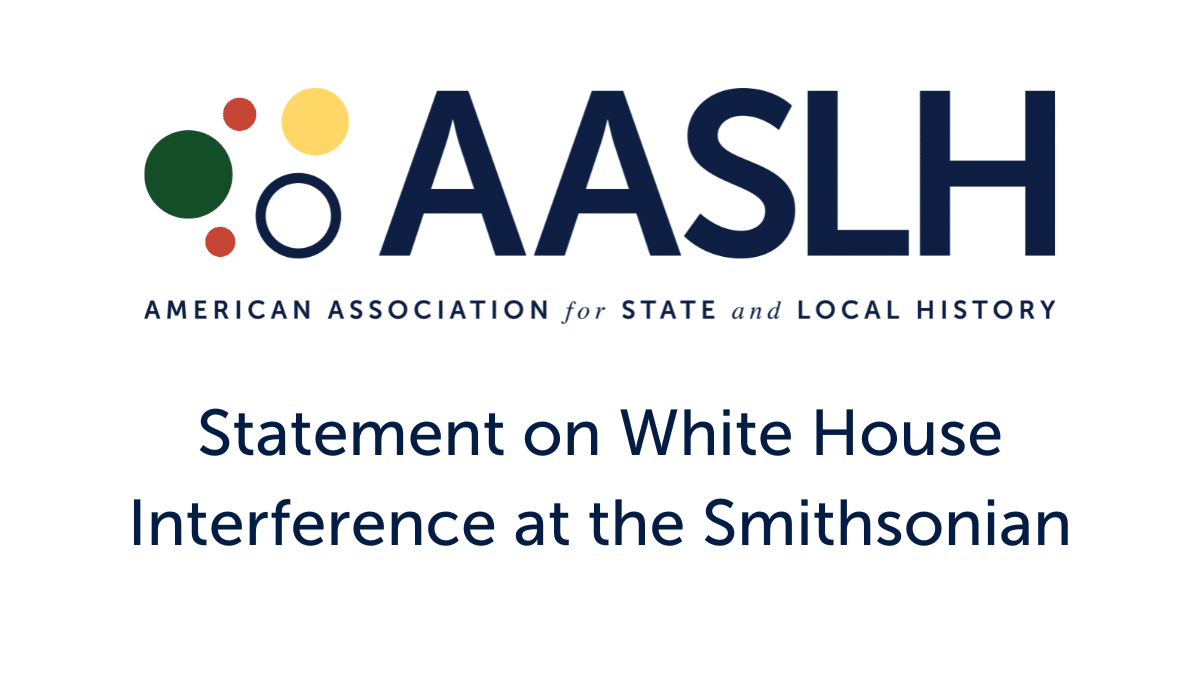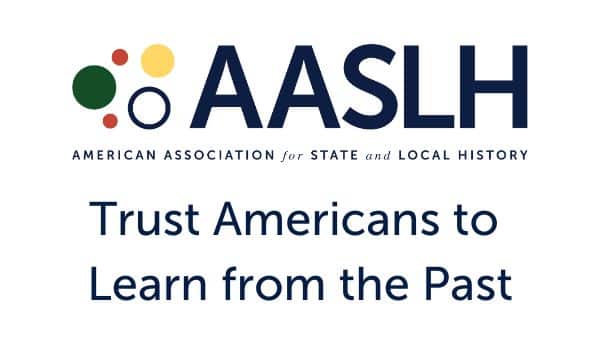
Erin Wright (IHS intern 2022-2023) leads the Ugly Sweater contest at an annual event.
By Bethany Hrachovec, Indiana Historical Society and AASLH Educators and Interpreters Committee
This two-part blog highlights key takeaways and observations from a session at the 2023 AMM conference titled “Reaching and Supporting the Next Generation: Problems, Solutions, and Inspiration” presented by Bethany Hrachovec (Indiana Historical Society, Indianapolis, IN), Jeannie Regan-Dinius (Crown Hill Cemetery, Indianapolis, IN), and Anne Jordan (Little White School Museum, Oswego, IL)
In part 1 of this two-part blog I laid out an overview of just some of the braking points my co-panelists and I identified for both young professionals and intern supervisors at organizations. Through the panel discussion and then our audience discussion, key takeaways for supervisors emerged. What follows are the takeaways for intern supervisors and organizations looking to welcome young professionals to their sites.
Be realistic with what you’re looking for. As you look at the project you are wanting assistance with, ask yourself “Am I looking to teach someone how to do this project? Or am I looking for someone to do the project?” Interns are there to learn; don’t hire them if you don’t have the time and capacity to teach. It’s okay if you don’t have that time and capacity! Just be realistic with yourself.
Provide tools for the basics. You don’t have to be the one to teach emerging professionals how to do basic functions of Outlook. But you’ll probably save yourself some time and frustration if your incoming staff have a resource they can reference to teach themselves some of those basics. For example, we recommend Teacher’s Tech on YouTube for tech basics!
Create learning objectives, and then check in on them. When an intern starts, work with them on what it is they want to learn. These learning objectives should feed into the work they’re doing, and you should touch base with them throughout the internship to ensure that they are learning what they wanted to, that those objectives haven’t changed as they gained more exposure to the field, and that the projects are still being accomplished while supporting those goals.

Kristopher Strebe (IHS intern 2021-2022) play tests an escape room with IHS volunteers.
Broaden your applicant pool. If you have always received applicants or partnered with one specific school with students all taught by the same professors, you’ll inevitably find that your interns have similar approaches over time. Diversifying the field should also include encouraging applicants from colleges, universities, and trades fields that are different from ones you’ve always brought in. New approaches will help encourage new ways of thinking in your organization.
Get creative with funding. Pay your interns a living wage (pay all staff a living wage!). Looking for alternative funding to help support interns can help alleviate your organization’s budget. Have you looked into being a work study eligible location? Does your state have employment assistance programs for students (in Indiana we have an EARN program which helps cover part of the intern’s salary)? What community organizations could you partner with to help cover the costs? Are there trade schools that fund apprenticeship programs? When writing a grant, could you build in the cost of an intern to not only help with the project but also give them valuable training?
Emphasize transferable skills. Connect the skills the intern is learning or honing to other areas of the field, or even outside the field. Emphasize how the skills they are learning appear in other aspects of the field or in other careers; they will leave with a better understanding of how to communicate transferrable skills to future employers (check these stories from Museums Association on the power of transferable skills). You’ll get better at recognizing how those skills show up in resumes featuring non-traditional museum/public history paths as well!
Expose them to other professionals and cultural organizations. Go to local museums together and be focused in your exploration. Meet with other professionals with your interns, visit other sites, and discuss how the work looks different at different organizations.
Be respectful of differences. Generational, cultural, neurological, etc. Problematic behaviors should always be addressed, but take a step back and assess whether something needs to be addressed or if it’s just different from how it’s always been done.
Be empathetic. Everyone has gone through a lot. Be kind to one another.
Set clear expectations. Don’t assume knowledge of business culture or processes. At the end of the day, no one is coming to work wanting to do a bad job. Be clear in what you are looking for so that whomever is coming in can bring their best and meet expectations.
Focus on the end goal. There is absolutely space for following set processes and templates. But take a moment and step back when someone comes in with a new approach. If the end goal is still being met, does it have to be achieved in the exact steps you would have done it in?
For even more thought and inspiration on reaching and supporting the next museum workers, check out Seven Tips for Starting an Equitable and Inclusive Internship Program and At the Barnes Foundation, Internal Internships Support Frontline Staff from AAM, In Defense of the Interns from MuseumDrip, and Museums and Employee Diversity from Museum Next.



